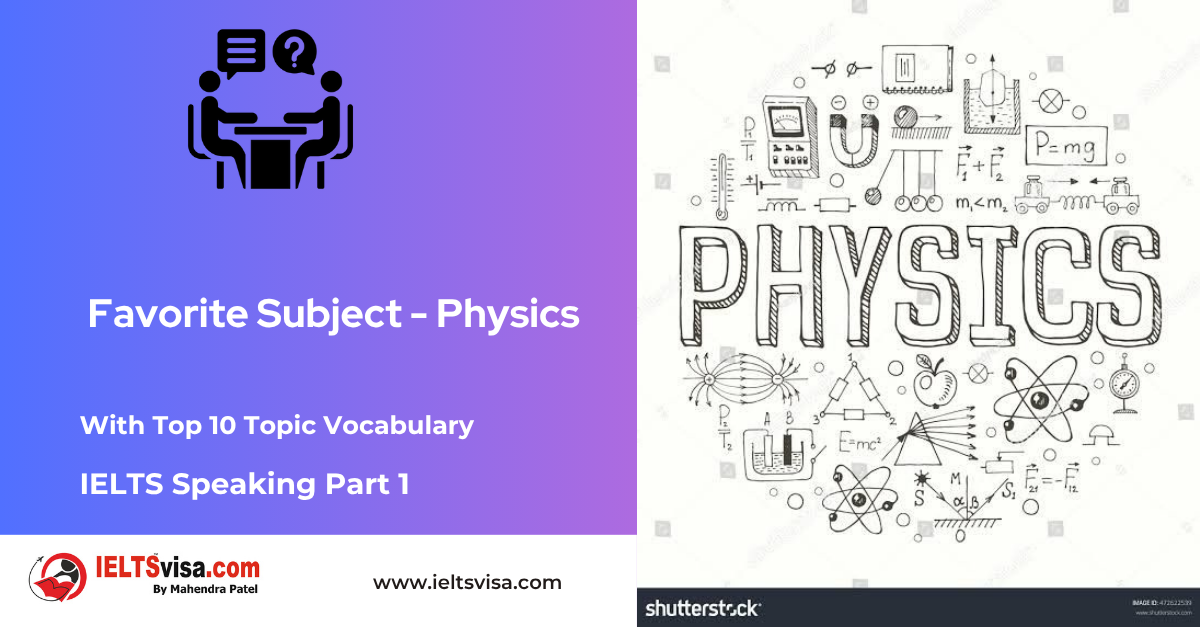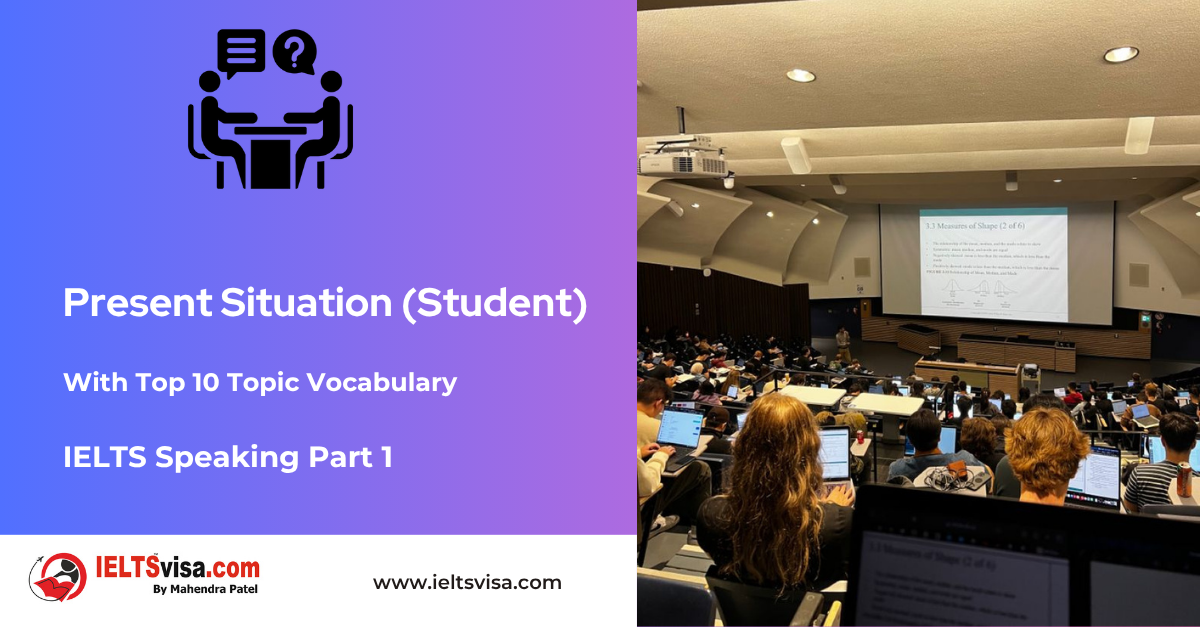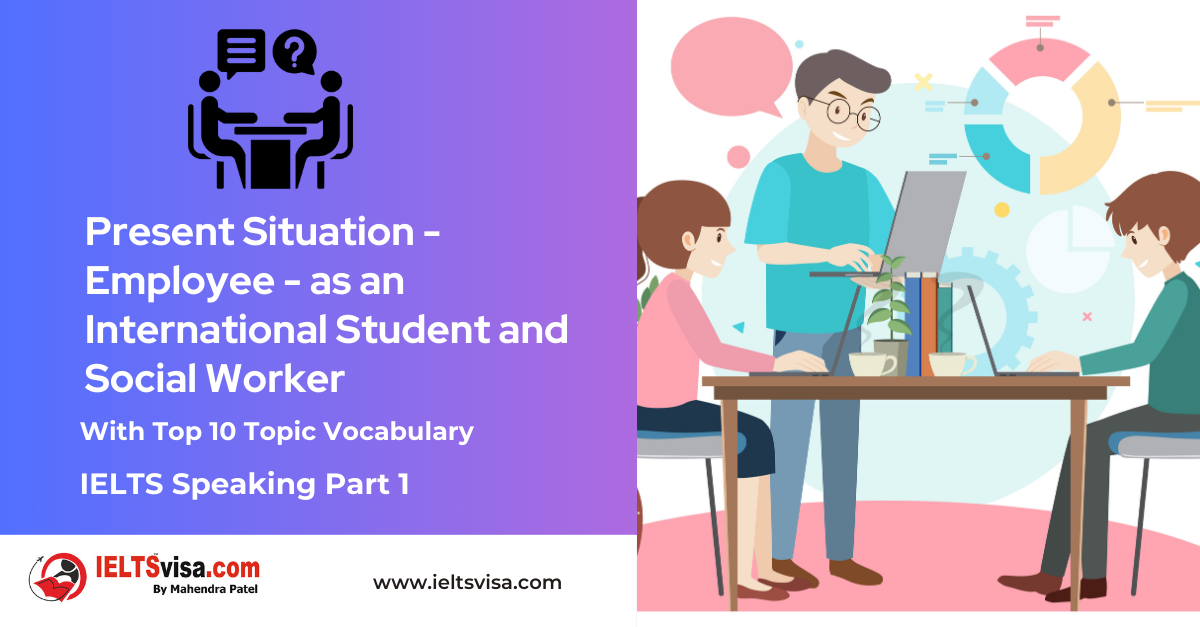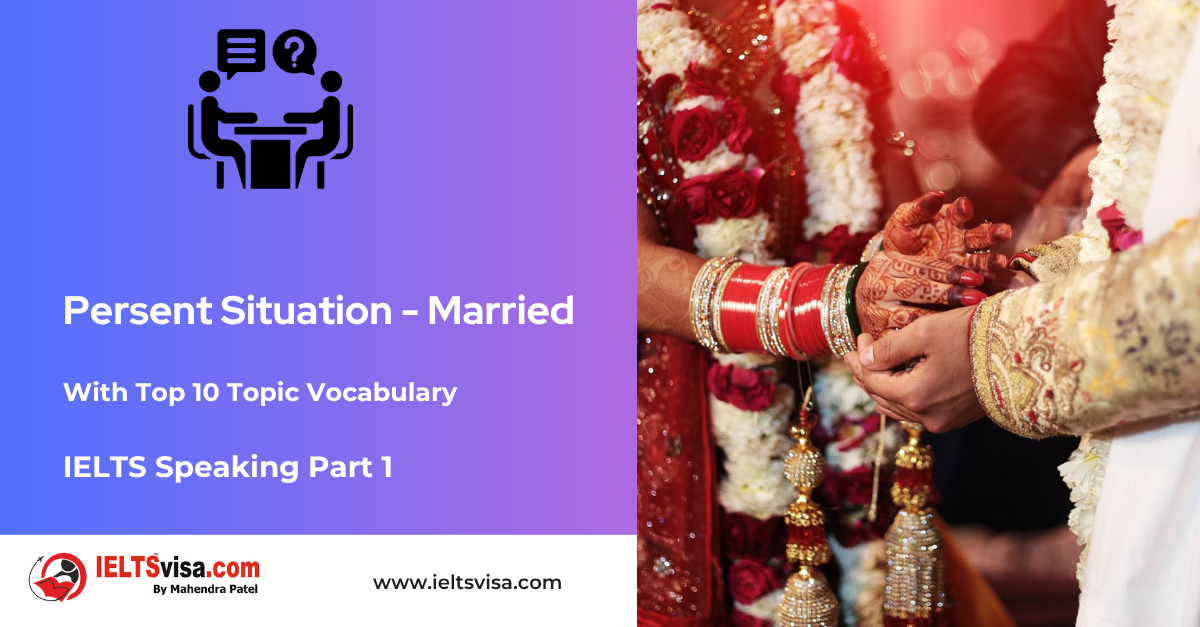Present Continuous and Present Simple
Grammar for IELTS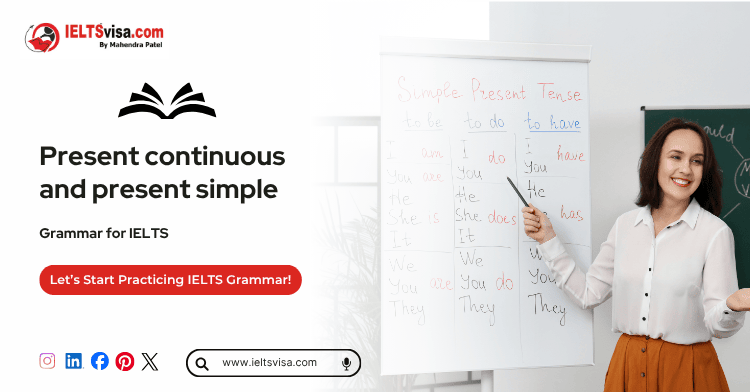
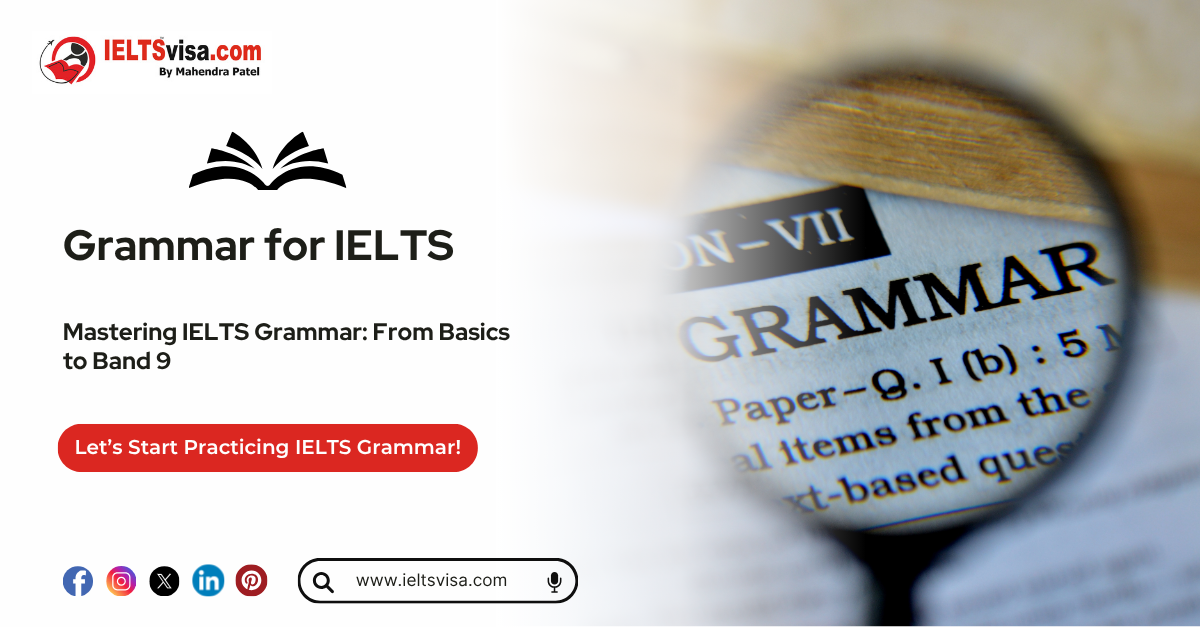
Present Continuous and Present Simple
The Present Continuous and Present Simple tenses are among the most essential components of English grammar. They are vital for expressing actions, habits, ongoing events, and general truths. In this extensive guide, we will explore the rules, structures, differences, and applications of these tenses in detail. This resource is designed for beginners, children, and non-native English speakers looking to master these foundational concepts.
Table of Contents
1. Introduction to Present Tenses
2. What is the Present Continuous Tense?
-
- Definition and Usage
- Rules and Structure
- Examples
3. What is the Present Simple Tense?
-
- Definition and Usage
- Rules and Structure
- Examples
4. Key Differences Between Present Continuous and Present Simple
5. When to Use Present Continuous vs. Present Simple
6. Common Mistakes in Present Tenses
7. Present Continuous and Present Simple in Daily Life
8. Examples of Present Continuous and Present Simple
9. Present Continuous and Present Simple in Questions
10. Exercises for Practice with Answers
11. FAQs on Present Tenses
12. Tips to Master Present Continuous and Present Simple
13. Conclusion
1. Introduction to Present Tenses
The present tenses in English grammar allow us to describe actions or events happening now, habitual activities, and general truths. They are divided into two main categories:
1. Present Continuous Tense – Describes actions happening at the moment of speaking or temporary situations.
2. Present Simple Tense – Refers to habitual actions, universal truths, and regular routines.
2. What is the Present Continuous Tense?
Definition and Usage
The Present Continuous Tense expresses actions or events that are ongoing at the moment of speaking. It is also used for temporary situations, planned future events, and trends.
Rules and Structure
Formula:
Subject + am/is/are + Verb (V1) + ing + Object
Positive Sentence:
-
- I am eating lunch.
- She is reading a book.
Negative Sentence:
-
- I am not eating lunch.
- She is not reading a book.
Interrogative Sentence:
-
- Am I eating lunch?
- Is she reading a book?
Examples of Present Continuous Tense
-
- I am studying English right now.
- They are playing football in the park.
- He is watching a movie.
3. What is the Present Simple Tense?
Definition and Usage
The Present Simple Tense is used to describe habits, routines, general truths, and facts. It is also used for fixed schedules and instructions.
Rules and Structure
Formula:
Subject + Verb (V1) (+s/es for singular third person) + Object
Positive Sentence:
-
- She walks to school.
- They play chess on Sundays.
Negative Sentence:
-
- She does not walk to school.
- They do not play chess on Sundays.
Interrogative Sentence:
-
- Does she walk to school?
- Do they play chess on Sundays?
Examples of Present Simple Tense
-
- The sun rises in the east.
- He drinks coffee every morning.
- They visit their grandparents on weekends.
4. Key Differences Between Present Continuous and Present Simple
| Aspect | Present Continuous | Present Simple |
| Usage | Actions happening now | Regular routines or habits |
| Formula | am/is/are + Verb (V1) + ing | Verb (V1) (+s/es for singular subjects) |
| Example | She is writing a letter. | She writes letters every day. |
| Time Expressions | Now, at the moment | Always, every day, usually |
5. When to Use Present Continuous vs. Present Simple
A. Present Continuous
1. Actions Happening Now:
-
-
-
- I am eating breakfast.
-
-
2. Temporary Situations:
-
-
-
- She is staying with her aunt for a week.
-
-
3. Planned Future Events:
-
-
-
- We are meeting the manager tomorrow.
-
-
B. Present Simple
1. Habits and Routines:
-
-
-
- He drinks tea every morning.
-
-
2. Universal Truths:
-
-
-
- Water boils at 100°C.
-
-
3. Fixed Schedules:
-
-
-
- The train departs at 6 PM.
-
-
6. Common Mistakes in Present Tenses
Mistake 1: Mixing Continuous and Simple Forms
Incorrect: She is always write letters.
Correct: She always writes letters.
Mistake 2: Adding -ing to Stative Verbs
Incorrect: I am knowing the answer.
Correct: I know the answer.
7. Present Continuous and Present Simple in Daily Life
Present Continuous in Daily Life
-
- Describing current actions: “I am watching TV.”
- Talking about temporary states: “We are living in New York this month.”
Present Simple in Daily Life
-
- Discussing habits: “I go for a walk every evening.”
- Stating general facts: “Birds fly in the sky.”
8. Examples of Present Continuous and Present Simple
Present Continuous Examples
-
- She is practicing piano.
- They are visiting their grandparents this weekend.
Present Simple Examples
-
- He studies at 7 PM daily.
- We celebrate Christmas every year.
9. Present Continuous and Present Simple in Questions
Present Continuous Questions:
-
- Are you coming to the party?
- Is he working on the project?
Present Simple Questions:
-
- Do you like ice cream?
- Does she speak Spanish?
10. Exercises for Practice with Answers
Exercise 1: Fill in the Blanks
1. She ___ (watch) TV right now.
2. They ___ (play) football every weekend.
3. I ___ (not, study) at the moment.
Answers:
1. is watching
2. play
3. am not studying
Tips to Master Present Continuous and Present Simple
1. Practice Regularly: Write and speak sentences using both tenses.
2. Identify Time Expressions: Recognise clues such as “now” for the Present Continuous and “always” for the Present Simple.
3. Focus on Context: Use Present Continuous for ongoing actions and Present Simple for Habits.
FAQs on Present Tenses
Q1: Can I use Present Simple for future events?
A: Yes, for scheduled events: “The bus leaves at 5 PM.”
Q2: What are stative verbs?
A: Verbs that describe states, like “know,” “like,” or “believe,” and are not used in continuous forms.


Must and Can’t: A Comprehensive Guide to Usage, Meaning, and Examples
Understanding modal verbs such as "must" and "can't" is crucial for mastering English grammar. These two verbs are powerful tools for expressing certainty, necessity, and impossibility. Whether you are a beginner, an advanced learner, or someone teaching English to children, this guide is tailored to meet your needs. It provides SEO-friendly, professional content to help learners understand the nuances of "must" and "can't."
Table of Contents
1. What Is the Difference Between Can and Could?
2. Table Summarizing Can vs Could
3. Detailed Meanings of Can and Could
4. Examples of Can and Could in Sentences
5. Key Usage Rules for Can and Could
6. Practice Questions to Test Your Understanding
7. Frequently Asked Questions on Can vs Could
8. Conclusion
1. What Is the Difference Between Can and Could?
Both "can" and "could" are modal verbs used to express ability, possibility, and permission. However, they differ in meaning and context:
-
- "Can" refers to something happening in the present or future and indicates a strong possibility or ability.
- "Could" often talks about something in the past, expresses a weaker possibility, or makes polite requests.
2. Table Summarizing Can vs Could
Here is a list of modal verbs with their primary functions:
|
Aspect |
Can |
Could |
|
Meaning |
Denotes ability, permission, or strong possibility in the present/future |
Refers to past ability, polite requests, or weaker possibilities |
|
Tense |
Present or Future |
Past or Hypothetical |
|
Examples |
She can run fast. |
She could run fast when she was younger. |
|
Politeness |
Less polite |
More polite |
|
Possibility Strength |
Strong |
Weak |
3. Detailed Meanings of Can and Could
What Does "Can" Mean?
Ability: Expresses the capability to do something.
-
- Example: I can swim well.
Permission: Grants or asks for permission.
-
- Example: You can use my phone.
Possibility: Indicates a strong likelihood.
-
- Example: It can get very hot in the desert.
What Does "Could" Mean?
Past Ability: Refers to something someone was able to do in the past.
-
- Example: When I was a child, I could climb trees.
Polite Request: Used to make polite requests.
-
- Example: Could you help me with my homework?
Weaker Possibility: Expresses something less certain or hypothetical.
-
- Example: It could rain later today.
4. Examples of Can and Could in Sentences
Here are some examples to help you see the difference clearly:
Using "Can":
1. Ability:
-
-
-
- She can play the guitar beautifully.
-
-
2. Permission:
-
-
-
- You can leave early if you finish your work.
-
-
3. Possibility:
-
-
-
- This road can be dangerous at night.
-
-
Using "Could":
1. Past Ability:
-
-
-
- He could solve difficult math problems as a child.
-
-
2. Polite Request:
-
-
-
- Could you please lend me your notebook?
-
-
3. Weaker Possibility:
-
-
-
- This old house could collapse in a storm.
-
-
5. Key Usage Rules for Can and Could
1. Tense Matters:
-
- Use "can" for present and future situations.
- Use "could" for past situations or hypothetical scenarios.
2. Politeness:
-
- "Could" is often used to make requests sound more polite.
3. Possibility Levels:
-
- "Can" shows a higher chance of something happening.
- "Could" shows a lower or uncertain possibility.
6. Practice Questions to Test Your Understanding
Fill in the blanks with the correct form (can or could):
1. She _______ dance gracefully when she was younger.
2. I _______ help you with your homework tomorrow if you want.
3. _______ you please pass me the salt?
4. It _______ snow tonight, so bring a jacket just in case.
5. We _______ go to the park this evening if it doesn’t rain.
Answers:
1. could
2. can
3. Could
4. could
5. can
7. Frequently Asked Questions on Can vs Could
Q1: Can "can" and "could" be used interchangeably?
No, they cannot be used interchangeably. "Can" is for present or strong possibilities, while "could" is for past, polite requests, or weaker possibilities.
Q2: Is "could" always more polite than "can"?
Yes, "could" is considered more polite, especially in requests.
Q3: Can "could" be used in the present tense?
Yes, "could" can be used in the present tense for polite or hypothetical statements.
Our Books
Master IELTS Speaking Part 1
IELTS Writing Task 1 Book
IELTS Writing Task 2 Book
Practice IELTS Other Modules
IELTS Listening
The IELTS Listening test assesses how well you can understand spoken English in various contexts. It lasts about 30 minutes and is divided into four sections with a total of 40 questions. The listening tasks become increasingly difficult as the test progresses.
IELTS Academic Reading
The IELTS Academic Reading section assesses your ability to understand and interpret a variety of texts in academic settings. It is designed to evaluate a range of reading skills, including skimming for gist, reading for main ideas, reading for detail, understanding inferences, and recognizing a writer's opinions and arguments.
IELTS Speaking
The IELTS Speaking test assesses your ability to communicate in English on everyday topics. It lasts 11-14 minutes and consists of three parts: introduction, cue card, and a discussion based on the cue card topic.
IELTS General Reading
IELTS General Reading tests your ability to understand and interpret various types of texts. Here are some key areas and types of content you can expect to encounter in the reading section, along with tips for effective preparation.
IELTS Academic Writing Task 1
In IELTS Academic Writing Task 1, you are presented with a visual representation of information, such as graphs, charts, tables, or diagrams, and you are required to summarize, compare, or explain the data in your own words.
IELTS General Writing Task 1
In IELTS General Writing Task 1, you are required to write a letter based on a given situation. The letter can be formal, semi-formal, or informal, depending on the prompt. Here’s a breakdown of the key components to include in your letter
IELTS Academic Writing Task 2
In IELTS Academic Writing Task 2, you are required to write an essay in response to a question or topic. Here’s a guide to help you understand the essential elements of this task
IELTS Exam Tips
To succeed in the IELTS exam, practice regularly, familiarize yourself with the test format, improve your vocabulary, develop time management skills, and take mock tests to build confidence.
Grammer for IELTS
Grammar is the foundation of effective communication in English. Understanding tense usage, subject-verb agreement, and sentence structure enhances clarity and coherence in writing and speaking.
Vocabulary for IELTS
Vocabulary plays a crucial role in the IELTS (International English Language Testing System) exam, especially in the Speaking and Writing sections. Here’s an overview of why vocabulary is important and how it impacts your performance
RECENT IELTS SAMPLES QUESTIONS AND ANSWERS
IELTS Speaking Part 1 – Favourite Sujbect – Physics
IELTS Speaking Part 1 - Favourite Sujbect - Physics Q: What is your favourite subject? A: My favourite subject...
IELTS Speaking Part 1 – Present Situation (Student)
IELTS Speaking Part 1 - Present Situation (Student) Q1: Are you a student or do you work?A: I’m a full-time...
IELTS Speaking Part 1 – Present Situation – Employee – as an International Student and Social Worker
IELTS Speaking Part 1 - Present Situation - Employee - as an International Student and Social Worker Q1: Are...
IELTS Speaking Part 1 – Persent Situation – Employee- as an Electric Engineer
IELTS Speaking Part 1 - Persent Situation - Employee- as an Electric Engineer Q1: What do you do for a...
IELTS Speaking Part 1 – Persent Situation – Employee – as an Software Engineer
IELTS Speaking Part 1 - Persent Situation - Employee - as an Software Engineer Q1: What do you do for a...
IELTS Speaking Part 1 – Persent Situation – Married
IELTS Speaking Part 1 - Persent Situation - Married Q1: Are you married?A: Yes, I am married. My spouse and I...

